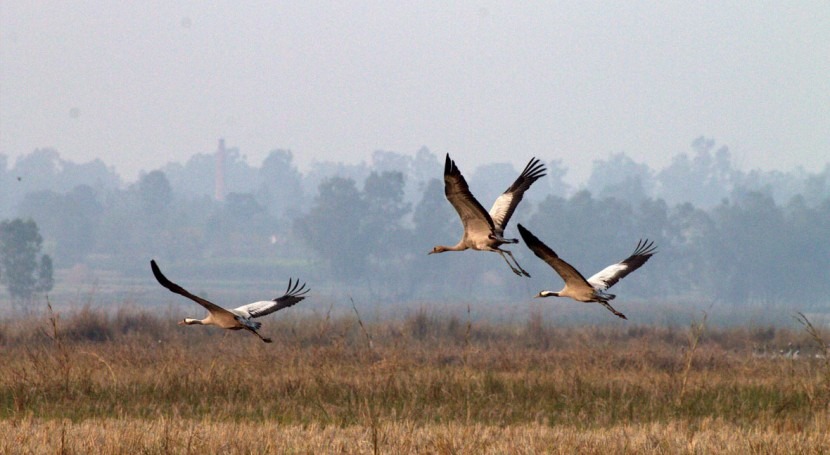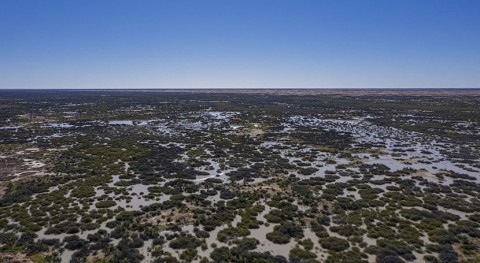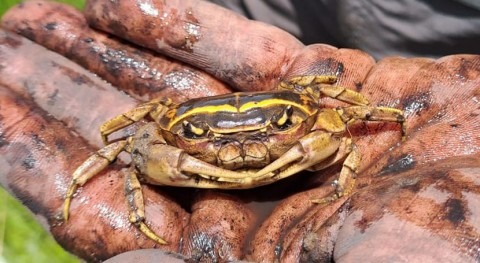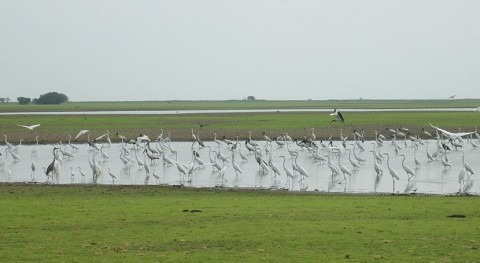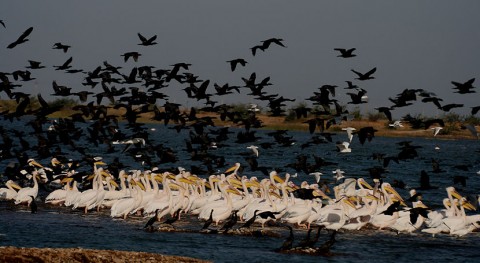India has named ten new Wetlands of International Importance on the occasion of World Wetlands Day. They provide habitats to an exceptional biodiversity, while providing communities with food resources and protection against threats such as flooding.
Nandur Madhameshwar (no. 2410 on the List of Wetlands of International Importance) is a mosaic of lakes, marshes and riparian forest on the Deccan Plateau in Maharashtra State. Construction of the Nandur Madhameshwar Weir at the confluence of the Godavari and Kadwa Rivers helped create a thriving wetland: originally designed to overcome water shortages in the surrounding area, the Site now also serves as a buffer against floodwaters and as a biodiversity hotspot. It provides sanctuary to critically endangered species including Deolali minnow (Parapsilorhynchus prateri), Indian vulture (Gyps indicus) and white-rumped vulture (Gyps bengalensis).
A number of the wetlands are in the State of Uttar Pradesh and are noted for their birdlife. Saman Bird Sanctuary (no. 2413 on the List) in the Mainpuri district is a seasonal oxbow lake on the Ganges floodplain. The Sanctuary regularly provides refuge to over 50,000 waterbirds (187 bird species have been recorded) and is particularly important as a wintering site for many migrants including the greylag goose (Anser anser), with over 1% of the South Asian population present during winter.
Nawabganj Bird Sanctuary (Site no. 2412) is a shallow marshland 45 kilometres from Lucknow. Monsoon rains feed this diverse wetland while the Sarda Canal supplies additional water. The Sanctuary supports recreation and tourism activities as well as local biodiversity. It is a haven for birds, with 25,000 waterbirds regularly recorded and 220 resident and migratory species documented.
Samaspur Bird Sanctuary (Site no. 2415) is a perennial lowland marsh typical of the Indo-Gangetic Plains. The Sanctuary harbours threatened species such as the endangered Egyptian vulture (Neophron percnopterus) and Pallas’s fish eagle (Haliaeetus leucoryphus), and more than 1% of the South Asian population of the vulnerable common pochard (Aythya farina).
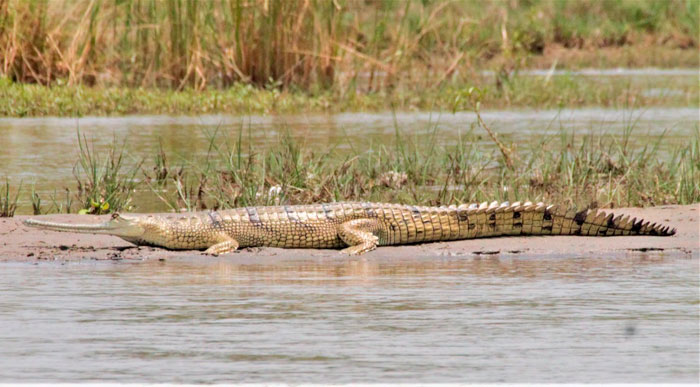
Beas Conservation Reserve, Gavialis gangeticus. Credit: Gitanjali Kanwar, 2019
Sandi Bird Sanctuary (Site no. 2409) is a freshwater marsh in the Hardoi district. Rich in aquatic plants, the Site provides a productive habitat for waterfowl with over 40,000 individuals counted in 2018. It is home to over 1% of the South Asian populations of common teal (Anas crecca), red-crested pochard (Netta rufina) and ferruginous duck (Aythya nyroca), while the vulnerable sarus crane (Grus antigone) has a population of 200 individuals within the Sanctuary.
Parvati Arga Bird Sanctuary (Site no. 2416) is a permanent freshwater environment consisting of two oxbow lakes. These wetlands are characteristic of Uttar Pradesh and offer exceptional habitats for waterbirds, providing both roosting and breeding sites with over 100,000 birds documented in annual counts. The Sanctuary is a refuge for some of India’s threatened vulture species: the critically endangered white-rumped vulture (Gyps bengalensis) and Indian vulture (Gyps indicus), and the endangered Egyptian vulture (Neophron percnopterus) have all been recorded.
Sarsai Nawar Jheel (Site no. 2411) is a permanent marsh in the Etawah district of Uttar Pradesh. It is an example of co-habitation of humans and wildlife: farming practices across most of the Site play important roles in sustaining the waterbird habitats. A particular beneficiary is the vulnerable sarus crane (Grus antigone), with a population of 400 individuals making up the largest flock in the region.
In the State of Punjab, the Beas Conservation Reserve (Site no. 2408) is a 185-kilometre stretch of the Beas River. The River is dotted with islands, sand bars and braided channels creating a complex environment supporting substantial biodiversity. More than 500 species of birds are documented along this stretch, along with more than 90 fish species. The Reserve also hosts the only known population in India of the endangered Indus river dolphin (Platanista gangetica minor).
Located in the Shiwalik foothills of Punjab is the highly eco-sensitive Nangal Wildlife Sanctuary (Site no. 2407) , which supports abundant flora and fauna including threatened species, such as the endangered Indian pangolin (Manis crassicaudata) and Egyptian vulture (Neophron percnopterus) and the vulnerable leopard (Panthera pardus). It occupies a human-made reservoir constructed as part of the Bhakra-Nangal Project in 1961.
The Keshopur-Miani Community Reserve (Site no. 2414) is a mosaic of natural marshes, aquaculture ponds and agricultural wetlands maintained by the annual rainfall runoff. The Reserve is heavily human-influenced, and includes a series of managed fishponds and cultivated crops such lotus and chestnut. The Site is an example of wise use of a community-managed wetland, which provides food for people and supports local biodiversity.


